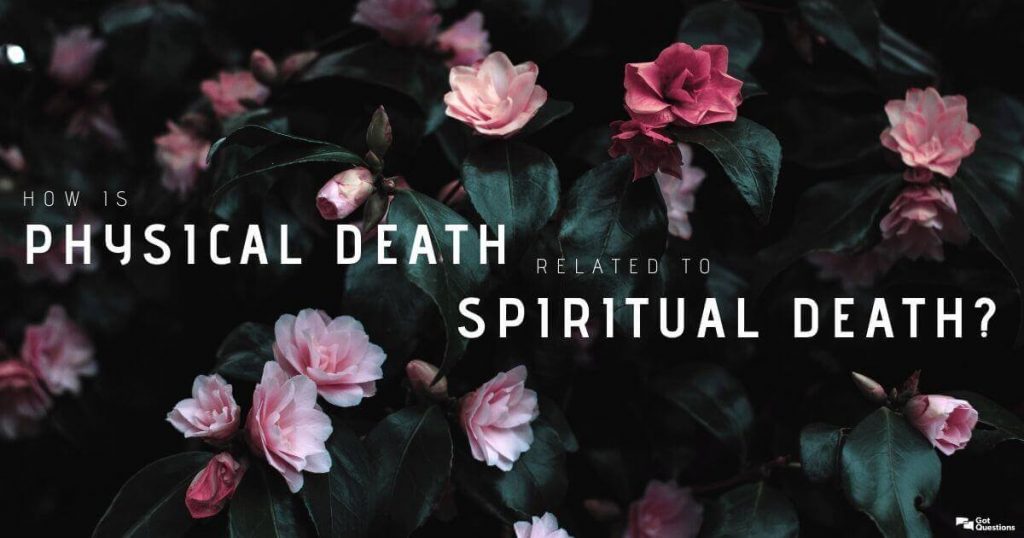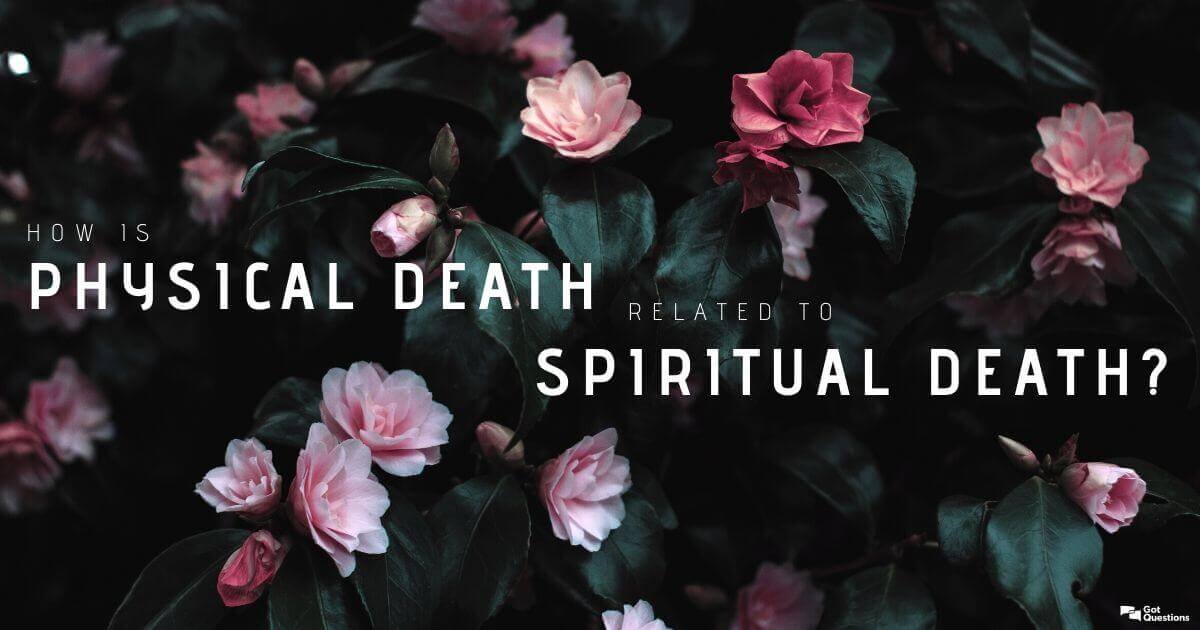
The Bible has a great deal to say about death and, more importantly, what happens after death. Physical death and spiritual death are both a separation of one thing from another. Physical death is the separation of the soul from the body, and spiritual death is the separation of the soul from God. When understood in that way, the two concepts are very closely related, and both physical death and spiritual death are reflected in the very first references to death.
In the creation account (Genesis 1–2), we read how God created a variety of living beings. These animals had life, an inward element that gave movement and energy to their physical bodies. Scientists are still at a loss to explain what truly causes life, but the Bible is clear that God gives life to all things (Genesis 1:11-28; 1 Timothy 6:13). The life that God gave to mankind was different from that which He gave to animals. In Genesis 2:7, we are told that God “breathed into his nostrils the breath of life, and man became a living soul.” Whereas animals have a purely physical life, humans have both a physical and a spiritual element of life, and the death we experience likewise has both a physical and a spiritual element.
According to Genesis 2:17, God told Adam that, if he ate of the tree of the knowledge of good and evil, he would “surely die.” Some skeptics have tried to use this verse to show an inconsistency in the Bible, because Adam and Eve did not die the very day they ate of that fruit. However, there are different types of life, and there are different types of death. A person can be physically alive and spiritually dead (Ephesians 2:1, 5) and vice versa (Matthew 22:32). When they sinned (Genesis 3:7), Adam and Eve immediately lost their spiritual life, they become “dead” to godliness, they forfeited Eden, and they came under God’s judgment (eternal death). Their shame triggered a correlating action, as they hid from God (Genesis 3:8)—their internal separation from God manifests itself in an external separation from Him.
In addition to the immediate spiritual death they experienced, they also began the process of physical death, even though it took many years for death to have its full effect. This can be better understood with the example of a flower. When you see a flower growing in a garden, you know it is alive, because it is connected to the stem and the roots, and is receiving nourishment from the ground. When you separate the flower from its life source, it still has the appearance of life, and can maintain that appearance for several days, depending on the conditions. Regardless of the care it is given, though, it is already dying, and that process cannot be reversed. The same is true for mankind.
The physical death that entered into the world with Adam’s sin (Romans 5:12) affected all living things. It is difficult for us to conceive of a world without death, but that is what Scripture teaches was the condition before the Fall. All living things began the process of dying when sin entered the world. When physical death occurs, there is a definite separation of the life force from the body. When that separation occurs, there is nothing man can do to reverse it (even the medical community acknowledges the difference between a “clinical death” and a “biological death”). The wages of sin is death (Romans 6:23), and death comes upon all men because all have sinned. Everyone is subject to physical death because of the presence of sin in this world, as well as their own personal sins. From a human perspective, physical death seems to be the ultimate punishment, but the Bible teaches there are deeper meanings of death to be considered.
The life that God breathed into Adam (Genesis 2:7) was more than just animal life; it was the breath of God, resulting in a being with a soul. Adam was created spiritually alive, connected to God in a special way. He enjoyed a relationship with God, but when he sinned, that relationship was broken. Spiritual death has implications both before and after physical death. Though Adam was still physically alive (but beginning the dying process), he became spiritually dead, separated from relationship with God. In this present life on earth, the effect of spiritual death is the loss of God’s favor as well as the knowledge of and desire for God. Scripture is clear that everyone begins life “dead in trespasses and sins” (Ephesians 2:1-5), resulting in a life focused on our sinful desires. Jesus taught that the remedy for spiritual death is a spiritual rebirth (John 3:3-5) through faith in Him. This rebirth is a re-connection to the source of life, which Jesus pictured in John 15:1-6. He is the vine, and we are the branches. Without being connected to Him, we have no life in us, but when we have Jesus, we have real life (1 John 5:11-12).
For those who refuse to accept God’s salvation, physical death and spiritual death culminate in the “second death” (Revelation 20:14). This eternal death is not annihilation, as some have taught, but is a conscious, eternal punishment for sins in the lake of fire, described as being separated from the presence of the Lord (2 Thessalonians 1:9). Jesus also spoke of this eternal separation from God in Matthew 25:41 and identified the conscious torment of individuals in the story of the rich man and Lazarus (Luke 16:19-31). God is not willing that any should perish, but that all should come to repentance (2 Peter 3:9), so they do not have to remain spiritually dead. To repent means to turn away from sin, and includes confessing sin to God with sorrow for violating His holiness. Those who have received God’s salvation have turned from death to life (1 John 3:14), and the second death has no power over them (Revelation 20:6).
